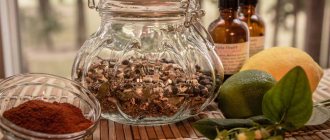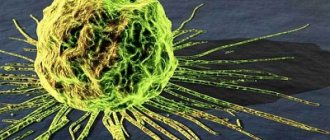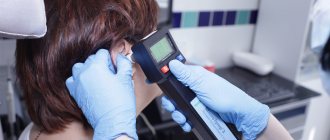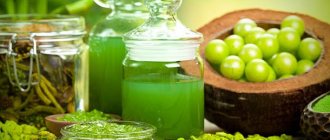Bacterial vaginosis, thanks to the bacterium Gardnerella vaginalis, also called gardnerellosis, is a very common disease among the fairer sex. Therefore, the question of how to treat gardnerella arises quite often. The initial theory regarding the development of pathology assumed exclusively infection through sexual contact. However, it was subsequently revealed that gardnerella was initially present in the vaginal microflora along with other opportunistic bacteria. They make up only 2%, the remaining 98% are lactobacilli that produce lactic acid, which creates a healthy environment and prevents the development of pathologies.
When the number of lactobacilli decreases for some reason, gardnerella begins to actively multiply . The vaginal environment changes from acidic to alkaline, which increases the risk of penetration of infectious agents and the development of inflammatory processes in the genitourinary system.
Causes and symptoms of pathology
There are many reasons that can trigger the development of bacterial vaginosis. The most common include:
- Long-term treatment using antimicrobial drugs, which simultaneously destroy lactobacilli along with pathogenic microorganisms.
- An incorrectly formulated diet, without including fermented milk products in the menu, which are suppliers of lactic bacteria.
- Excessive use of certain intimate hygiene products that contain Triclosan.
- The use of spirals, suppositories, vaginal tablets with spermicides, oral contraception.
- Various hormonal and endocrine disorders, allergic pathologies, chronic intestinal diseases, against which dysbiosis develops.
- Failure to comply with hygiene rules.
- Pregnancy, especially if there are certain complications when carrying a child.
- Using tight-fitting synthetic underwear, which creates problems with oxygen supply; abuse of tampons, panty liners, which act in the same way.
- Insufficiently high immunity, which does not allow the body to cope with problems on its own.
As for symptoms, in the fairer sex the disease manifests itself more clearly compared to the male part of the population.
Usually the volume of vaginal discharge increases, it becomes gray or yellow, although it can be completely transparent.
More often the consistency of the discharge is homogeneous, but it can also be foamy. The most striking sign indicating the development of gardnerellosis is the smell of discharge, which resembles rotten fish. In addition, discomfort develops in the vaginal area - burning, itching, redness and swelling of the labia appear. When urinating and having sexual intercourse, painful sensations occur.
In men, signs of the disease may be completely absent. In cases where the cause of gardnerellosis is inflammation of the urinary tract, a substance with an unpleasant fishy odor begins to be released from the penis. They also note the appearance of burning and discomfort during sexual intercourse.
Traditional treatment of pathology
In order for the treatment of the disease to be most effective, it is necessary to carefully select pharmaceutical drugs, since an incorrectly drawn up therapeutic regimen can aggravate the pathology and cause complications.
Before prescribing medications, the doctor conducts the necessary tests to determine the degree of infection and the state of the vaginal environment . Considering that treatment requires the prescription of antibiotics, their selection should be done by a specialist, especially when it comes to a pregnant woman. In this case, therapy begins at 20 or 22 weeks, which eliminates the possibility of harm to the fetus.
Despite the fact that it is often antibiotics that cause dysbiosis in the vagina, it is almost impossible to do without the use of antimicrobial drugs for gardnerellosis. As practice shows, treatment is most effective if it is started at an early stage of the development of pathology, and it is necessary to take into account the patient’s condition. After antimicrobial therapy, it is necessary to restore the microflora and strengthen the immune system, otherwise you can expect a relapse of the disease. Correction of nutrition and more careful intimate hygiene are recommended as effective preventive measures. Let's look at how to treat gardnerella. The following drugs are commonly used:
- For mild cases of the disease, Clindamycin suppositories, cream or capsules are prescribed.
- Ornidazole, which is a derivative form of 5-nitroimidazole, is prescribed.
- The newest drug from the macrolide group is Vilprafen, which is effective in the treatment of diseases of the genitourinary system. The drug is contraindicated in patients with intestinal dysbiosis.
- Unidox Solutab belongs to the tetracycline group, the active substance of the drug is doxycycline.
- Broad-spectrum antimicrobial agents include Polygynax. Doctors readily prescribe it to patients, but one should be careful when taking tablets, since along with gardnerella, the drug also kills lactobacilli.
- Another remedy that affects both pathogenic and beneficial bacteria is Azithromycin. So after consuming it, it is necessary to restore the microflora.
- Dazolic with the active substance ornidazole is very effective, but it is contraindicated for pregnant and lactating women;
- Fast-acting drugs include Trichopolum, which becomes dangerous in case of overdose, individual intolerance, and is not indicated for pregnant women in the first trimester and during breastfeeding.
This list of pharmaceuticals is far from complete, but for treatment to be competent and effective, they should only be prescribed by a qualified specialist.
Traditional medicine - the use of antibacterial herbal remedies
Many plants have antimicrobial properties, but traditional recipes must be used against the background of traditional treatment and after consulting a doctor. Here are some effective recipes describing how to cure gardnerella using herbal ingredients:
- It is necessary to douche, for which chamomile flowers, St. John's wort and sage are mixed in equal parts. Then two large spoons of the raw material are poured with boiling water in an amount of 250 ml, infused until warm and filtered.
- An infusion of pine buds is considered a good antimicrobial agent. To prepare it, pour a large spoonful of the crushed ingredient into a thermos, pour in 500 ml of boiling water, and leave overnight. In the morning, the liquid is filtered and then drunk warm four times a day before meals. The volume of a single dose is ½ glass. It is not recommended to eat for half an hour after drinking. The duration of therapy is two weeks.
- Taking essential oil obtained from tea tree will be effective. Add one drop of butter to one large spoon of milk. The product should be taken in the morning and evening hours. The duration of such therapy is 21 days.
- The oil can also be used to prepare healing tampons. You should boil 10 grams of lean, flaxseed or any other vegetable oil, add 5 drops of essential oil to it, and mix. A sterile tampon must be moistened with the product and inserted into the vagina overnight. Procedures must be carried out at intervals of 24 hours, there should be ten in total.
- Mix one and a half small spoons of clover with two small spoons of white water lily flowers, the same number of garden rose petals and white peony, and add three small spoons of chamomile flowers to the mixture. After stirring, brew a large spoonful of the mixture in 500 ml of boiling water and leave for 40 minutes, then filter and drink ½ cup in the morning and evening. The same remedy is recommended for douching. The duration of treatment is 10 days.
Traditional treatment - herbal baths and the use of tampons
Baths are a prime example of how to treat gardnerella without expense or special effort at home. To obtain a therapeutic effect, use warm liquid. The main effect of the baths is the removal of inflammatory processes and the healing of microscopic wounds:
- It is necessary to soak 250 grams of oak bark in cool water, after which the mixture is brought to a boil, filtered, and the broth is poured into a container with four liters of water. The procedure is carried out for 20 minutes.
- A large spoonful of natural honey needs to be diluted in 250 ml of heated water, after which the solution is poured into a container of water, adding a little liquid soap for better penetration of the beneficial components into the skin and mucous membranes.
- Mix 200 grams of nut leaves with the same amount of chamomile, brew the mixture with 1000 ml of boiling water and cook over low heat for 40 minutes. Then the broth is filtered and poured into water for baths. To enhance the therapeutic effect of the product, you can add horsetail or yarrow to the collection.
- You can mix equal parts of oat straw, juniper fruits, walnut leaves, oak bark, and chamomile. The mixture is boiled covered for 45 minutes, filtered and added to bath water. The plants collected in this recipe provide antifungal, antibacterial and antiviral benefits.
Let's look at how to treat gardnerella using gauze swabs. You can soak them in two ways: by diluting freshly squeezed aloe juice with olive oil in a 1:1 ratio or with sea buckthorn oil. The prepared tampon must be inserted into the vagina for seven to eight hours. The best time to perform the procedure is before going to bed.
All means and components for the treatment of gardnerella must be selected taking into account the individual characteristics of the body in order to avoid allergic reactions or worsening of the condition.
Vaginal dysbiosis is called gardnerellosis or vaginosis. At the first signs of the appearance of gardnerella, treatment at home or on an outpatient basis should be immediate. Unlike many other pathologies of the genitourinary system, gardnerellosis can be cured using traditional medicine, but it is not a bad idea to consult a specialist and familiarize yourself with his recommendations.
Basic methods of treating pathology using traditional medicine
The active proliferation of gardnerella bacteria in the vagina is characterized by extremely unpleasant symptoms. Burning, itching and other signs of discomfort appear. To suppress the activity of bacteria, 2 main methods are used in folk medicine:
- the use of infusions of medicinal plants internally;
- using them to wash the vagina.
To cure the disease, plants that have a pronounced antibacterial effect are suitable. This could be St. John's wort, chamomile, sage, etc. Herbal infusions are actively used, which also include medicinal herbs that have an anti-inflammatory and calming effect. Regardless of the composition of the collection, the method of making infusions is the same. To prepare a drink for internal consumption at home, you need to take the herbs in equal quantities and mix well.
Then 2 tablespoons of the resulting mixture are poured into 1 liter of boiling water and left for 8-10 hours. During the day, the infusion is consumed 3 times, ½ cup, 15 minutes before meals. If infusions will be used to wash the vagina, you should take an equal amount of well-crushed herbs and mix. 1 tablespoon of the mixture is poured into 1 liter of boiling water and also left for 8-10 hours. The procedure is carried out 2-3 times a day, drawing 1 glass of liquid into a syringe.
In order for the healing process to be more effective, experts recommend combining douching with oral medication. With proper use of medications, complete recovery from bacterial vaginosis occurs within 1-1.5 years. Treatment of gardnerellosis with folk remedies is carried out in courses of 3 months, between which a break of 14 days should be taken. Each course should be carried out using a new herbal mixture.
After 4 months of treatment, it is necessary to undergo an examination and tests that will allow you to draw conclusions about the effectiveness of the therapy.
If there is no improvement in your condition, it makes sense to abandon herbal medicine and switch to taking medications prescribed by a gynecologist.
Herbal preparations for internal and external use
A fairly large number of medicinal preparations are known that have a good effect in the treatment of genitourinary diseases. The most popular fees are:
- from blueberry and nettle leaves, pine buds, the ground part of lavender, wormwood and sweet clover, marshmallow and leuzea rhizomes;
- from plantain and birch leaves, clover flowers, rhizomes of snake knotweed and dandelion, wormwood, agrimony, toadflax and yarrow herbs;
- from viburnum bark, rhizomes of Rhodiola rosea, chamomile flowers, motherwort herb, thyme, blackhead, schizonepeta, mint, volodushka and shepherd's purse.
In addition, you can use infusions from:
- herbs meadowsweet, knotweed, St. John's wort, wormwood, cornflower and immortelle flowers, lumbago rhizomes, rose hips and coriander;
- marigold flowers, chicory rhizomes, dandelion, angelica and bergenia, thyme herbs, toadflax and knotweed, bearberry leaves, nettles, coltsfoot;
- chamomile flowers, bird cherry fruits, marshmallow and snakeweed roots, agrimony grass, shepherd's purse and meadowsweet.
To prepare an infusion for douching, a large number of medicinal preparations are used. The main ones should be considered fees from:
- tansy flowers, wintergreen leaves, birch, blueberries and cuffs;
- herbs violet, wormwood, geranium, chamomile flowers and oak bark;
- blueberry leaves, meadowsweet flowers and marigolds, mint and St. John's wort, dandelion and angelica rhizomes;
- eucalyptus and wintergreen leaves, mint and sweet clover herbs.
Other recipes from traditional healers
You can also treat the genitals for gardnerellosis with tea tree oil. It is used as an antibacterial agent for local therapy and as a general tonic drug orally. For internal use, 1 drop of oil is mixed with 1 tablespoon of milk and taken 2 times a day. The course of treatment is 21-28 days, then you need to take a break of 1 week and repeat the dose if necessary.
For local therapy, a solution with tea tree oil is used. To prepare the solution, take 1.5 teaspoons or 1 dessert spoon of any vegetable oil, boil it and add 5 drops of tea tree oil. After this, gauze swabs are soaked in the solution and inserted into the vagina before bed. In the morning, the tampons are removed. The procedures should be done in a course of 10-12 times every other day. 2-3 courses are recommended with an interval of 7 days.
It is well known that changes in the acidity of the internal environment of the vagina can destroy harmful microflora. To do this, traditional medicine healers suggest using apple cider vinegar, which is used in the form of sitz baths. Before the procedure, 1 tablespoon of vinegar is diluted in 1 glass of warm boiled water. Treatment must be carried out every day for 2 weeks.
To increase the functionality of the immune system, traditional medicine recommends drinking infusions of blackcurrant leaves. To prepare the medicine, you need to brew 2 tablespoons of raw or dry raw materials with 2 cups of boiling water, then leave for 0.5 hours, strain, squeeze thoroughly and take ½ cup 30 minutes before meals 4 times a day. The course of treatment is 60 days.
In addition, a general tonic that will help get rid of gardnerellosis in women can be made by mixing: 300 g of heated honey and 150 g of crushed aloe leaves (the spiky edges of the leaves must be cut off). The mixture is infused for 24 hours, then heated, filtered and consumed every morning, 0.5-1 teaspoon 60 minutes before meals for 30 days.
When starting treatment for bacterial vaginosis with folk remedies, you should remember that this is a rather long and painstaking process. But with proper and careful attention to taking medications, the result will be the most positive.
Rate this article:
The vaginal mucosa is inhabited by various microorganisms, in particular gardnerella. They allow the mucosa to maintain its functions and also resist pathogens. But as a rule, up to a certain point.
Prolonged use of antibacterial drugs or even a decrease in the body’s defenses can provoke activation and reproduction of organisms. Then the symptoms of gardnerellosis begin to appear, a disease characterized by a violation of the vaginal microflora.
Pathology can occur in any person, regardless of age and gender. But still, women aged 25-40 are more susceptible to developing the disease. In men, the disease practically does not occur, since gardnerella cannot survive in the male body. Treatment of the disease must be timely and appropriate. Treatment of gardnerella with folk remedies is quite acceptable.
Useful products for gardnerellosis
When treating gardnerellosis, an important element is the patient’s nutrition. With its help, it should boost the immune system, align the microflora not only of the vagina, but also the intestinal microflora (often these diseases are related to each other).
To fulfill the above requirements, a woman must eat well. Her body must receive fats, carbohydrates, proteins, macro- and microelements in the required quantities.
For their uninterrupted supply, you need to eat fermented milk products, lean meats, sea fish and any seafood, vegetables and fruits (both fresh and heat-treated), cereals (porridge, bread made from wholemeal flour or with bran, you can eat sprouted wheat), nuts, beans, sauerkraut, mustard beans, vegetable oils: flaxseed, olive, sunflower, corn.
It is recommended to steam dishes or use boiling and stewing methods. There should not be much food eaten at one time (the entire portion should be the size of 2 woman’s fists), and the number of meals should be 4-6 times.
Traditional medicine for gardnerellosis
Treatment using traditional medicine is carried out: using medicinal infusions orally, using medicinal tampons and baths.
- For drinking , decoctions of sweet clover, marshmallow rhizomes, pine and birch buds, nettle leaves, dried grass, coltsfoot, wintergreen, clover flowers, calendula, bergenia, bearberry, leuzea, eucalyptus, mint, and St. John's wort are used. The decoction should be drunk before meals (20-30 minutes) at a dose of 100 milliliters per dose. The number of uses should be 3-4 times.
- To make medicinal tampons, use 1 tablespoon of freshly squeezed carrot juice in combination with 1 teaspoon of apple cider vinegar. This mixture is applied to a gauze pad and inserted into the vagina for 20 minutes once a day. Also, use aloe juice and sea buckthorn oil in a ratio of 1 to 1. A gauze swab is soaked in the medicinal mixture and inserted into the vagina before going to bed overnight.
- To relieve itching, burning and pain, sitz baths are used from decoctions prepared from oak bark, chamomile, and walnut leaves. Also, doctors recommend using solutions of lactic and boric acid for washing intimate areas.
To increase the body's defenses, you need to drink vitamin tea, which is prepared from: 1 quince, 2 glasses of cherries, one lemon, 10 cloves of garlic, 2 Antonovka apples and 9 glasses of water. All components must be crushed, poured with hot boiled water and left overnight. Drink 4 times a day. Dosage: half a glass at a time.
All recipes can also be used by men if the bacteria enters the urethra and causes unpleasant symptoms.
Dangerous and harmful products for gardnerellosis
- fatty meats;
- everything spicy, salty, fried, smoked, sweet, buttery;
- alcoholic drinks and sweet sodas, strong brewed coffee and tea, kvass (especially made with yeast);
- canned food, sausages, mayonnaise, dressings, factory-filled sauces;
- semi-finished products, fast food;
- beer shakes;
- mushrooms, preserves, vinegar-based marinades;
- yoghurts, starter cultures, cottage cheese, milk with the addition of various additives, dyes and flavor and smell enhancers.
These foods help develop bacteria and irritate the lining of the stomach and vagina, which in turn worsens symptoms.
Attention!
The administration is not responsible for any attempt to use the information provided, and does not guarantee that it will not harm you personally. The materials cannot be used to prescribe treatment or make a diagnosis. Always consult a specialized doctor!
Tatyana Eliseeva chief editor of the Food+ project
Ask a Question
Rating:
0
/10
Votes: 0
Material usefulness 0
Reliability of information 0
Article design 0
How to cure gardnerellosis with folk remedies?
Quite often, alternative medicine drugs are used as additional therapy for pathology. Remedies from the people will help in minimizing the manifestations of the disease, as well as in a speedy cure. It is important to understand that the use of any drugs, in particular from medicinal plants, must be approved by the attending physician.
Alternative medicine preparations, when used appropriately, will help eliminate the manifestations of bacterial vaginosis, namely: inflammation, transparent or whitish, thick, viscous discharge, and in the case of a long-term course of the disease, yellowish discharge with an unpleasant pungent odor, painful discomfort, pain in the lower abdomen and during sexual intercourse , burning and itching.
Ignoring the symptoms of the disease in women is fraught with the development of serious complications, in particular inflammation of the appendages and infertility. If gardnerellosis develops in a pregnant woman, lack of therapy can lead to premature birth and bleeding. Important information in the article “Thrush”.
Along with the use of medications, treatment of gardnerellosis with folk remedies is often prescribed. It is recommended to use infusions, decoctions and douches. All this will contribute to the normalization of the vaginal microflora and a speedy recovery. Ask a specialist about how to cure a disease using natural recipes. Do not self-medicate, it can harm you.
Prescriptions for oral medications
1. Combine birch leaves in equal proportions with the root of the snake knotweed, clover, flaxseed, plantain leaves, wormwood, yarrow, agrimony, lariat, and dandelion rhizomes. All components must be dried and crushed in advance. Brew 30 grams of the mixture with boiled water - 500 ml.
Infuse the mixture overnight. In the morning, strain and drink ½ glass of the drink before each meal. The duration of the therapeutic course is 90 days. This is followed by a two-week break. Continue treatment with another collection. In general, therapy for gardnerellosis lasts for a year and a half.
2. Mix geranium herb with birch leaves, elecampane rhizome, meadowsweet, mint, chamomile, licorice, celandine, and thyme in equal proportions. Steam two spoons of raw material with boiled water - 500 ml. It is recommended to infuse the product in a thermos for ten hours. Drink 100 ml of filtered drink three times a day. The course of treatment is three months, then a fourteen-day break and continuation of the course, but with the help of another collection. Full recovery occurs after a year.
3. Combine 10 grams of dried, finely chopped immortelle flowers with cornflower flowers, knotweed, fireweed leaves, meadowsweet, raspberry leaves, lumbago, wormwood, coriander, horsetail, rose hips, walnut leaves - with the same amount.
Brew two tablespoons of the mixture in boiling water - 500 ml. Leave the mixture to sit overnight. Drink ½ glass of infusion three times a day for three months. Next, take a short break - two weeks and continue therapy. Change your fees every three months. In general, the course of treatment is one year.
4. Mix bergenia rhizome with wintergreen, clover, coltsfoot, mint, tansy, bearberry, jasmine, and eucalyptus. Take 10 grams of all herbs. Steam the mixture with half a liter of boiling water. Place the container in a warm place for ten hours. Filter the composition and take half a glass three times a day. The course of therapy is one year.
5. Combine dried and crushed Veronica herb with wintergreen herb, angelica rhizome, calendula, fireweed leaves, mantle, mint, wheatgrass, pine buds, coriander, tricolor violet, parsley. Brew the raw material - 30 g with boiled water - a liter.
The composition must be infused for twelve hours. Drink ½ glass of filtered infusion three times a day. The duration of the course is 90 days. Then a break - 14 days and continuation of treatment with another collection. The general course of therapy is one year.
6. Take five walnut leaves, rinse and chop. Brew the raw material with boiling water – 200 ml. After half an hour, filter. Take 20 ml of the drug several times a day.
Douching
7. Combine wintergreen with sweet clover, eucalyptus and mint. All components must be dried and crushed in advance. Brew the raw materials - 30 grams with boiling water - half a liter. Infuse the mixture overnight. Use the strained infusion for douching twice a day. For one procedure you will need 200 ml.
8. Mix coriander with bird cherry fruits, juniper, coltsfoot, flaxseed, nettle, and birch leaves in equal proportions. Pour 50 grams of raw materials with boiled water. Leave it to brew. Use strained douching solution. The procedure is recommended to be carried out two to three times a day.
9. Combine violet herb - 10 grams with chamomile, wormwood, oak bark, geranium - the same amount. Steam the mixture with boiled water - a liter. The composition must be infused for three hours. Use the filtered infusion for douching twice a day.
More recipes in the article “Bacterial vaginosis and natural preparations for its treatment.”
Gardnerella therapy using folk remedies will help normalize the vaginal microflora, eliminate the symptoms of bacterial vaginosis, strengthen the immune system and improve well-being. The main thing is to use drugs from the people with the permission of the attending physician, not to abuse medications and not to exceed the dosages specified in the prescriptions.
Treatment of gardnerella with folk remedies
Before starting active treatment of gardnerella and ureaplasma using traditional methods, it is worth agreeing on a regimen with a gynecologist. Experts do not exclude the effectiveness of these funds, but it is better to use them as auxiliary ones.
Folk remedies represent a wide range of antiseptic decoctions and infusions for effectively combating the pathogen. All of them are used topically by douching.
The most common folk recipes for antiseptic procedures:
- douching with hydrogen peroxide - only a 1% solution is used and the procedure is carried out twice a day, no more than 7 days in a row;
- douching with Chlorhexidine, a pharmaceutical preparation is used, carried out no more than twice a day;
- chamomile decoction, for preparation you need to take 50 grams of chamomile and 0.5 liters of boiled water, this solution should be enough for two doses;
- tea tree oil - two or three drops should be dissolved in 1 tablespoon of milk and applied topically, do the procedure at night for three weeks, this method is used for treatment and prevention;
- infusion of oak bark, used by douching, to prepare the infusion you need to take 10 grams of dry material per 200 ml of boiling water (this is a one-time dose), the full course when used daily at night - a week;
- sea buckthorn oil - it is used in the form of warming tampons, they need to be placed only at night for 7-10 days (the product can be bought at a pharmacy or prepared independently);
- a decoction of a collection of antiseptic herbs - to combat gardnerella, chamomile, calendula and sage are used in equal proportions.
It is better not to use questionable and untested methods, as this can cause more extensive infection and lead to various kinds of complications.
What is gardnerellosis?
Gardnerellosis is a gynecological disease caused by the bacterium Gardnerella vaginalis. These microorganisms live in the vagina of most women, but in small quantities. The disease occurs when gardnerella becomes larger than normal, and the onset of the pathological process is facilitated by a decrease in the number of lactobacilli in the vaginal microflora. The disease recurs, so it is important to have a correct understanding of what gardnerellosis is, to know its symptoms, possible treatment and the use of medicinal herbs for this purpose.
Causes of gardnerellosis
The following factors leading to the development of gardnerellosis are identified:
- frequent change of sexual partners, promiscuous sex life without the use of barrier contraceptives;
- violation of the rules of intimate hygiene: untimely change of panty liners, as well as pads and tampons during menstrual periods;
- hormonal imbalance: the disease often occurs in pregnant women and girls during puberty;
- conditions causing immunodeficiency (immunosuppressive therapy, treatment of cancer pathology, HIV/AIDS);
- habit of wearing synthetic, tight-fitting underwear;
- dysbacteriosis caused by long-term antibiotic therapy.
What and how does vaginal dysbiosis occur?
Opportunistic bacteria, which include the Gardnerella bacterium, are present in the vaginal microflora in a certain amount. They do not cause much harm, since the immune forces independently regulate their growth. But this is only if everything is in order with health. Under unfavorable factors, the number of opportunistic microorganisms increases and a disease occurs.
Vaginal imbalance may be associated with internal or external pathological changes. Internal reasons include:
- hormonal imbalances;
- decreased local or general immunity;
- diseases of the genitourinary system;
- gastrointestinal pathologies;
- venereal diseases;
- exhaustion of the nervous system (neurosis, depression, asthenia).
External factors can also negatively affect the state of vaginal flora:
- long-term use of antibiotics or hormonal pills;
- passion for fast food, as well as strict diets;
- use of low-quality or scented intimate hygiene products;
- frequent wearing of tight underwear or thongs;
- unprotected sexual intercourse.
With frequent changes of sexual partners, a woman is at risk, since infection with STIs is one of the factors provoking the disease.
Symptoms of the disease
The main, and sometimes the only, sign of the disease is vaginal discharge: it is profuse, gray or yellowish in color, and its smell is reminiscent of rotten fish.
If other symptoms are present, this indicates the spread of the inflammatory process. Gardnerellosis can be complicated by vaginitis, which causes burning and itching in the genital tract. In this case, most women complain of discomfort that intensifies during sexual intercourse or urination.
Gardnerellosis in women: symptoms of the disease
The main complaint at the initial stage of development of vaginosis is a change in discharge due to gardnerellosis. They become abundant, creamy and have an unpleasant odor. They cause particular discomfort after intimacy. A woman can endure this symptom for years, trying to cope with it on her own. But as the disease progresses, the color of the discharge may change to yellow-green. They become sticky and cheesy in consistency. This leads to irritation and inflammation of the skin in the intimate area.
Other symptoms that should also alert a woman include:
- Persistent burning and itching sensation.
- Changes in the menstrual cycle.
- The appearance of the smell of “rotten” fish.
- Increased menstrual bleeding.
- Problems with urination – frequent urge, itching or pain when going to the toilet, decreased volume of urine.
- Pain during sexual intercourse.
Important! An asymptomatic course of gardnerellosis is possible . With this form, symptoms may be mild or completely absent. In this case, the disease can only be identified through laboratory tests.
Swelling of the vaginal walls is usually absent. The incubation period for vaginosis ranges from 7 to 15–20 days.
Infection of men
Gardnerellosis is a disease of women and develops in men. But if gardnerella gets into the urethra during sexual intercourse, then urethritis may occur under its influence. The disease manifests itself as discomfort during urination: itching, burning and pain. However, it is worth noting that for the development of urethritis, in addition to infection, a weakened state of the immune system is also necessary, because in healthy men with normal body resistance, inflammation in the genitourinary tract does not occur. Such men become carriers of bacteria and cause recurrent vaginosis in their sexual partner.
Traditional therapy for gardnerellosis
The treatment regimen for gardnerellosis includes two stages:
- First you need to eliminate the excessive amount of gardnerella in the genital tract. Therefore, the main drugs for gardnerellosis are the specific antibiotics metronidazole and clindamycin. They are prescribed for topical use in the form of gels, ointments or vaginal tablets for 7-10 days. Treatment of pregnant women with antibiotics differs: in the first trimester it is carried out with ampicillin, and in the second - with metronidazole. Pregnant women should not be prescribed clindamycin, as it has a toxic effect on the fetus. Treatment should not be delayed until the baby is born, as the infection can cause premature birth and complications in the health of the mother and child.
- After getting rid of pathogenic bacteria, it is necessary to restore the normal microflora of the vagina, which was damaged due to antibiotic therapy. For this purpose, vaginal suppositories containing lactobacilli are prescribed (it is recommended to use Acylact, Laktonorm or Lactobacterin). Sometimes oral administration of drugs is also possible. To achieve the best result, it is recommended to follow a diet throughout the entire period of treatment: exclude spicy and fried foods, alcohol and sweets from the diet, eat more fermented milk products containing lactobacilli: yoghurts and kefir.
- Sometimes, against the background of bacterial vaginosis, women develop intestinal dysbiosis. For the purpose of prevention, a course of probiotics is prescribed (Linex, Enterozermina, Bifidumbacterin and others).
- It is also useful to prescribe immunomodulators, since the disease often occurs against a background of weakened immunity. Naturally based preparations (for example, echinacea) are usually used.
During treatment, a woman should abstain from sexual activity or use condoms as contraception. Before treating gardnerellosis, you should definitely examine your sexual partner to prevent reinfection.
The effectiveness of therapy is monitored 10 days after its start, and if necessary, medications are adjusted.
How to treat gardnerellosis at home
Before starting treatment at home, you should consult your doctor. The goals of therapy are:
- Reducing the number of pathogenic microorganisms that live on the vaginal mucosa. Traditional medicine is not able to cope with this task. Antibacterial drugs are used for this. Drugs such as metronidazole or clindamycin in tablet form are prescribed. As additional treatment, medications are prescribed in the form of gels, ointments and creams.
- Restoration of vaginal microflora. Antibiotics have a detrimental effect on the microflora of the intestines and vagina, causing the development of thrush. To avoid this, probiotics and prebiotics are prescribed.
In addition to taking medications, a woman must follow a special diet. The following foods should be excluded from the diet:
- sweet fruits;
- fried;
- fat;
- mushrooms;
- mustard and ketchup;
- hard cheeses;
- pickled vegetables;
- spices;
- spicy dishes;
- sweet;
- products containing yeast.
When treating candidiasis, women are advised to avoid kvass and beer drinks, as they contain a large amount of yeast. This is due to the fact that they stimulate the growth of pathogenic microflora. During treatment, you need to give up tea and coffee, replacing them with juices, water, and fruit drinks. The diet must be followed for the first month or until the first symptoms disappear.
Alternative Treatments
Treatment of gardnerellosis with folk remedies helps to normalize the vaginal microflora and is a good prevention of diseases of the genitourinary system in women in the future. However, you need to remember that for recovery you cannot refuse antibiotic therapy, since only with its help can you completely get rid of gardnerella. In combination with the main treatment, the following recipes can be used:
- A collection of mint, celandine, chamomile, thyme, geranium, birch leaves, licorice roots and elecampane is being prepared. All plants must be present in equal quantities. Two tablespoons of the mixture are poured into a liter container and poured with boiling water overnight. The mixture should be infused for 6-8 hours, after which it should be strained and taken half a glass three times a day before meals. The course of treatment lasts one month and, if necessary, is repeated four times a year. The infusion has a beneficial effect on the immune system and increases the body's resistance.
- The following collection is prepared on the basis of nettle, wormwood, lavender, marshmallow root, pine buds and blueberry leaves. The infusion is prepared in the same way as the previous one, and is taken according to the same scheme. Treatment with these two infusions can be carried out alternately.
- To achieve a bacteriostatic effect, you can use walnut leaves, fresh or dried. They need to be dried and crushed, then pour one glass of boiling water and leave for half an hour. The infusion is drunk in small sips throughout the day. The course of treatment lasts two weeks.
- Sage helps restore the mucous membrane of the genital tract. The infusion is prepared from the leaves of this plant, which must be washed and crushed. One tablespoon of sage is poured into a glass of boiling water and left for half an hour. It is recommended to drink two glasses of infusion per day throughout the year.
However, most women prefer local treatment of gardnerellosis. In such cases, an infusion for douching is prepared from medicinal herbs: dried plants are crushed, then one tablespoon of the mixture is poured with a liter of boiling water overnight. The procedure is recommended to be carried out 3 times a day, introducing 200 ml into the vagina at a time. For this purpose, the following fees are popularly used:
- a combination of birch leaves, blueberries, mantle and tansy flowers;
- a mixture of geranium, violet, chamomile color and oak bark;
- calendula flowers, knotweed roots, plantain, thyme and speedwell herbs;
- the fourth infusion consists of viburnum bark, flax seeds, clover flowers and celandine;
- sweet clover, mint, wintergreen and eucalyptus are mixed.
In addition to herbs, you can also use drugs purchased at the pharmacy:
- At home, you can take a bath three times a day with a solution of salt or potassium permanganate, because this method helps kill bacteria.
- To restore the vaginal microflora, rinsing with solutions of boric or lactic acid is recommended.
- Douching with hydrogen peroxide affects the pH of the vagina and creates optimal conditions for the development of lactobacilli. It is necessary to irrigate with a 1% hydrogen peroxide solution every day, morning and evening. You can use this method at home for no longer than one week. To obtain the required concentration of the substance, a 3% solution is diluted with boiled water at a ratio of 1:3.
- Temporary relief occurs through the use of chlorhexidine - this drug helps get rid of gardnerella at home, but does not improve the pH of the vagina. Douching with chlorhexidine should be performed twice a day for a week.
To treat gardnerellosis in women, it is best to combine internal infusions and local therapy: then it will be possible to achieve both the destruction of bacteria and a general increase in immunity.
How to get a tax refund for sanatorium treatment and is it possible to get a preferential voucher after Covid?
If you have questions about medical law, ask our experts. To do this, in the comments to this article:
- briefly state the main facts;
— be as specific as possible about your question to the specialist;
— indicate what result you would like to achieve in this problematic situation.
Answers to your questions will be published in the next issue of the “Ask a Lawyer” section.
Question 1: I recovered from Covid with pneumonia. Is it possible to get a discounted ticket to a sanatorium and if so, how?
In this case, it is necessary to distinguish between medical rehabilitation after an illness, to which patients with “post-Covid syndrome” are entitled under the compulsory medical insurance policy for medical reasons, and sanatorium and health services provided by sanatoriums.
The first type of rehabilitation is provided for by the Methodological Recommendations of the Ministry of Health of the Russian Federation “Prevention, diagnosis and treatment of the new coronavirus infection (COVID-19)”, section 5.9. “Medical rehabilitation when providing specialized medical care to patients with COVID-19.” Such rehabilitation for patients who have suffered a severe form of the disease is carried out in three stages (inpatient hospitalization, 24-hour medical rehabilitation department, day hospital or outpatient treatment at the place of residence).
The patient receives a referral for the second and third stages of such treatment directly upon discharge from the hospital or after discharge from the local general practitioner. If you believe that you need such treatment, and the doctor at the clinic refuses to issue a referral, it is advisable to seek help from the medical insurance organization whose policy you have.
Mandatory sanatorium-resort treatment after COVID-19 is not yet provided for by the above Methodological Recommendations or other regulatory documents. Therefore, it is not possible for everyone to receive such treatment free of charge (as part of the compulsory medical insurance policy).
However, in some regions and municipalities, budget funds have been allocated to sanatoriums for the recovery of citizens after COVID-19, as a result of which a limited number of such citizens were/will be able to receive a voucher for such treatment for free.
In addition, preferential or free vouchers financed from the budget may be provided to certain categories of citizens who have suffered from COVID-19, including with a special certificate, for example, medical and social workers, military personnel, pensioners, etc.
It is better to learn about such opportunities from regional health authorities and social protection authorities at your place of residence. The documents that are required to apply for health resort treatment after COVID-19 generally include:
— passport or other document proving the identity of the applicant;
— child’s birth certificate (in case of “mother and child” check-in);
— SNILS (if available);
— a document issued by a state medical organization about a previous illness (coronavirus infection/viral pneumonia).
____________________________________________________________________
Question 2: Hello, can I get a tax deduction for medical services provided to my grandmother? Payment for services is/was made from my card. What documents and how do you need to prepare in this case? Are just checks and bank card statements enough?
In accordance with subparagraph 3 of paragraph 1 of Article 219 of the Tax Code of the Russian Federation, a taxpayer has the right to receive a social tax deduction in the amount paid by the taxpayer in the tax period for medical services provided to himself, his spouse, parents, children (including adopted children) ) under the age of 18, wards under the age of 18. Thus, paying for medical services for your grandmother does not allow you to receive the corresponding social tax deduction.
____________________________________________________________________
Question 3: Hello! Last year I was in a sanatorium. Tell me, how can I get my tax refund for treatment?
Medical services provided as part of sanatorium-resort treatment are included in the List of medical services, the amounts of payment for which at the expense of the taxpayer’s own funds are taken into account when determining the amount of social tax deduction (the list was approved by Decree of the Government of the Russian Federation dated 04/08/2020 No. 458). In this regard, such a deduction will be provided to you in the general manner upon presentation of the following documents to the tax authority at your place of residence:
— tax return in form 3-NDFL;
— an agreement for the provision of paid medical services with annexes and additional agreements to it (if concluded);
— a certificate issued by a medical organization regarding payment for medical services for submission to the tax authorities (the form of the certificate was approved by order of the Ministry of Health of Russia and the Ministry of Taxes of Russia dated July 25, 2001 No. 289/BG-3-04/256);
— application for personal income tax refund.
Since you underwent treatment last year, you can apply for a tax deduction starting in January of the current year. It is necessary to keep in mind that the tax deduction will not be provided for the entire cost of the trip (since it includes the cost of accommodation and meals), but only for the cost of treatment. Therefore, the sanatorium must obtain a separate certificate about the costs of treatment.
____________________________________________________________________
Question 4: Hello, please tell me in what case they may refuse to assign you to a clinic?
According to Part 2 of Article 21 of the Federal Law of November 21, 2011 No. 323-FZ “On the fundamentals of protecting the health of citizens in the Russian Federation”, to receive primary health care, a citizen chooses a medical organization, including on a territorial-precinct basis, no more than once a year (except for cases of change of residence or place of stay of a citizen).
Thus, you can be denied access to the chosen clinic only if you want to exercise your right to choose a medical organization more than once in a year and such a desire is not related to a change in your place of residence or place of stay. In all other cases, refusal to attach will be unlawful. This issue is regulated in more detail by the Order of the Ministry of Health and Social Development of the Russian Federation dated April 26, 2012 “On approval of the Procedure for a citizen to select a medical organization when providing medical care within the framework of the program of state guarantees of free provision of medical care to citizens.”
Lyudmila Plekhanova answered your questions
Photo depositphotos.com The author’s opinion may not coincide with the opinion of the editors











